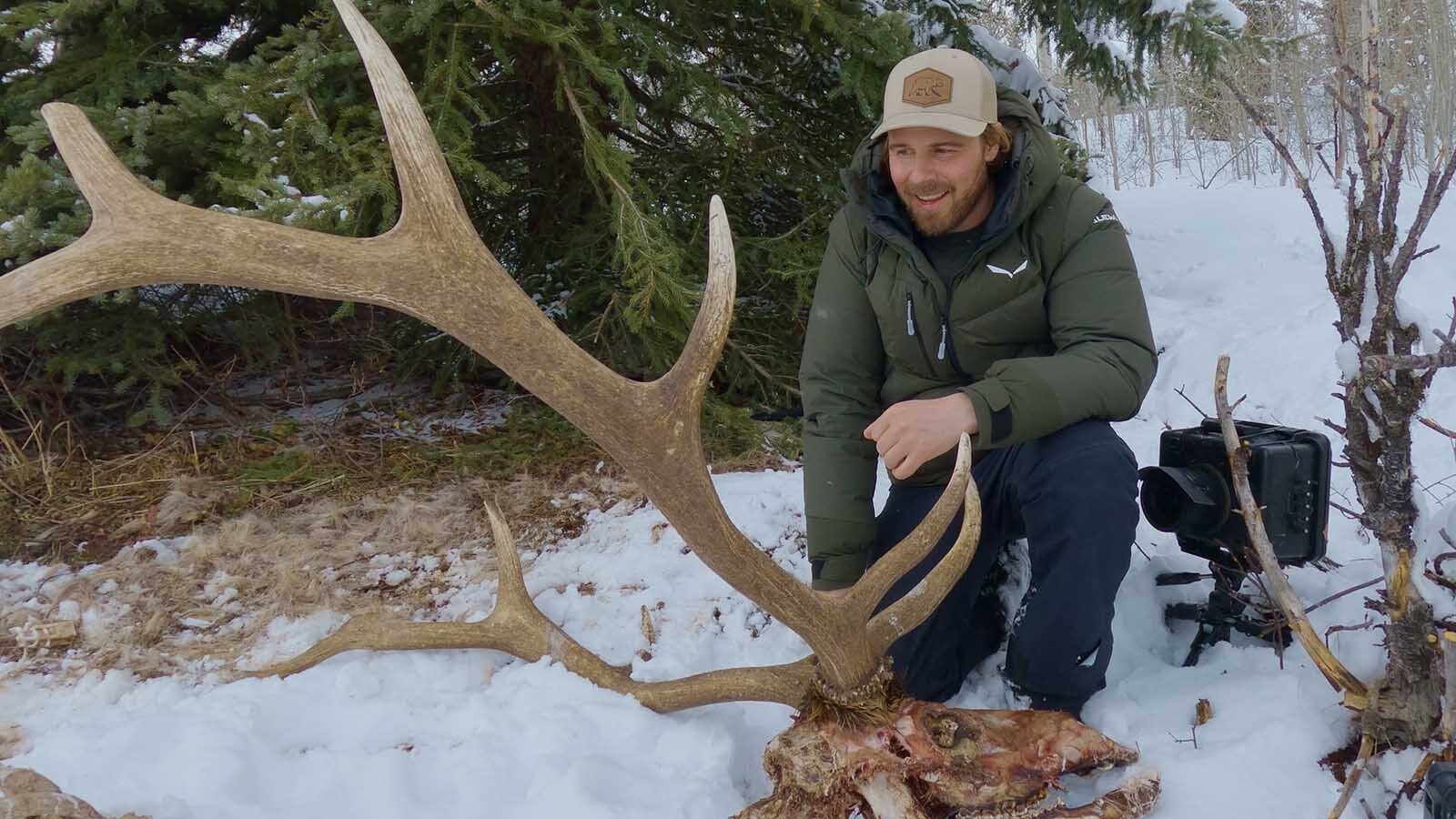A bull elk’s lingering death was tough to watch, but video taken next to its carcass over the course of about six weeks provides a rare view into how death feeds into life in Wyoming, a wildlife filmmaker said.
Jake Davis of Jackson told Cowboy State Daily that he got the unexpected opportunity of a lifetime early this year, in the depths of winter, when he spotted a wounded bull elk languishing near Togwotee Pass on the Bridger-Teton National Forest.
The bull had nasty wounds on its hindquarters, the telltale signs of a wolf attack, he said.
“I thought maybe the elk was hunted by wolves, and escaped,” he said.
It was tough to watch the elk suffer, but Davis stayed back and let nature take its course.
After the bull was dead, he moved in and set up several trap cameras (video and still cameras set to automatically record) around the carcass.
Images of predators and scavengers gobbling up big game carcasses are common, but Davis said this was an opportunity to take it to the next level.
“To me, what was really unique about this situation was the ability to work with a fresh carcass, and record the entire process,” he said.
Wolves Had To Bust It Open
Davis can’t be absolutely certain that the elk was wounded by wolves and escaped. But that scenario makes sense, according to what wildlife biologists know.
National Park Service wildlife biologist Dan Stahler previously told Cowboy State Daily that wolves have about only a 10% to 15% success rate when they hunt adult elk.
And even less success than that hunting even larger animals like bison, he added.
“It’s difficult for wolves to kill elk. And it’s even more difficult for them to kill bison,” Stahler said.
Davis said the early images he captured at the carcass showed smaller animals, such as foxes and coyotes, doing their best to get a piece of the elk.
The carcass was frozen solid, making it all but impossible for them to get a bite, he said.
Meanwhile, some birds — including ravens, magpies and golden eagles — plucked out the eyes and some other tender parts.
Then some wolves showed up and went to work.
They had the size, strength and jaw power to rip through the frozen elk hide, exposing the meat and entrails, Davis said.
That opened the buffet for smaller animals, once the wolves had eaten their fill, he said.
“Once the wolves ripped open the hide, it was a feeding frenzy,” he said.
Rotating Cast Of Characters
Davis was mesmerized by the video he captured as the drama of nature’s clean-up crews in action unfolded.
The wolves came and went a few times. When they were present, foxes and other small critters were “timid” and stayed out of the wolves’ way, he said.
During breaks in the wolf action, foxes and coyotes would move in to gorge themselves, and birds continued to show up.
At one point, a wolf picked up one of his cameras and packed it off. Davis cross-country skied around the area until he found the camera, where the wolf had apparently gotten bored and dropped it.
The outer case had bite marks in it, but the camera itself was in perfect working order.
The end of the video shows the wolves coming back one last time when the carcass had been reduced to just the skull, antlers and bones.
Davis’ microphones captured low, fierce growls from the wolves, and the loud crunching of bones.
The entire process took about six weeks, Davis said.
One Death Fuels Many Lives
Davis added that no bears showed up, probably because it was winter and they were hibernating.
A big, ornery grizzly moving in on the carcass would have “added a whole new dynamic” to the storyline of what happens after an elk dies in Wyoming, he said.
Davis said he understands the sentiments that people might have about the elk being wounded by wolves and suffering a lingering death.
However, he also appreciates how the elk’s carcass went back to nature and fed many other animals, which might not have otherwise made it through the winter.
“Nothing went to waste,” he said.
Mark Heinz can be reached at mark@cowboystatedaily.com.
















